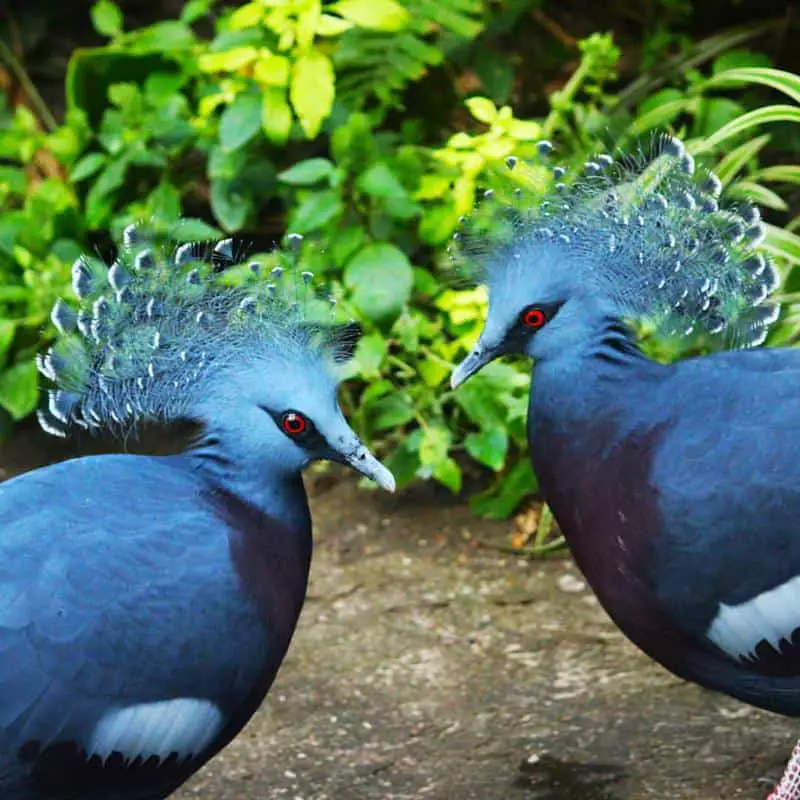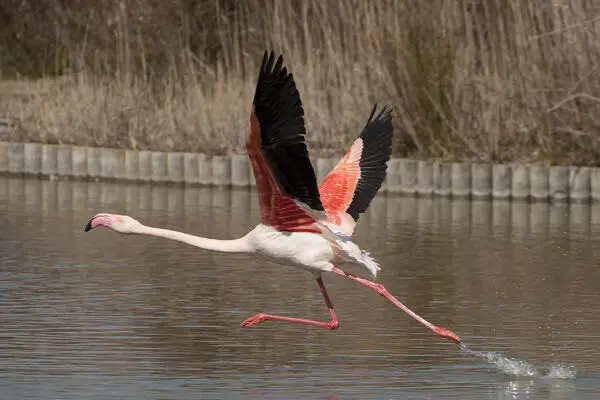When thinking of mohawks, one might immediately conjure images of punk rockers or the Native American tribes from whom the hairstyle originated. Perhaps Mr. T from the A-Team also comes to mind, as one of the most famous wearers of the modern mohawk. However, there’s an unexpected twist to this iconic style: birds.
Crests vs. Mohawks: A Brief History
The mohawk hairstyle is commonly recognized as a central peak of hair with shaved sides. Its association with punk music, popularized in the 1970s and 1980s, draws inspiration from the Mohawk Nation of Native American tribes.
Birds with Mohawks? Understanding Crests
In the avian world, the striking hairstyles often referred to as “mohawks” are more accurately termed crests. These structures, composed of specialized semiplume feathers, vary from species to species. Some birds sport crests throughout their lives, while others only display them during specific seasons.
Anatomy of a Mohawk: What Are They For?
A bird’s crest serves various purposes, primarily in the realm of mating. These ornate features are often raised or lowered as part of elaborate courtship displays. For example, Waxwings utilize crest-raising as a means of communication during the mating ritual.

A manageable crest’s ability to act aggressively or to threaten someone else is another advantageous quality. Cockatiels and cockatoos, for example, often have striking crests that they may abruptly lift to intimidate other birds by seeming larger. Crest display, which conveys either authority or submission, may aid in determining social hierarchies within a flock.
Throughout human history, crests have been favored in domesticated creatures because of their remarkable shape or eye-catching colors. Genetic mutation, selective breeding, or a combination of these processes have contributed these traits. Several varieties of farmed chickens, such as Houdan chickens with their bizarre crown of black and white feathers, provide some amazing specimens.
For the time being, however, let’s concentrate on a few amazing instances of birds sporting elaborate mohawks—one for every color of the rainbow and a few more hues beyond that.
Mohawked birds Each and every rainbow color:
1. RED: Crested partridge

Only the male of the Crested partridge species has the stunning crimson plume. The fluffy scarlet crest is highly attractive, but surprisingly difficult to discern in the wild, especially in contrast to a male’s sooty black plumage. Usually seen calmly feeding on the forest floor of lowland rainforests, this species may be found from Borneo to Thailand, Malaysia, and south Burma.
Females often have chestnut brown wings and an olive green coloration, without the red crest. Typically monogamous, mating partners keep close together via a succession of low whistles and forage together.
Unfortunately, the International Union for Conservation of Nature (IUCN) has classified crested partridges as Near-Threatened because of habitat loss from deforestation and pressure from hunting.
2. ORANGE: Eurasian Hoopoe

The Eurasian Hoopoe is a very unique bird that is difficult to miss. It has black-and-white barred wings and an eye-catching peach-orange head, throat, and crest. The black-tipped crest is often “closed,” but it may also “open” during courting or defensive displays, as well as after it has landed.
This species is found in a large portion of Asia, Africa, and Europe. Its very modest environmental requirements—open ground for foraging and steep sides with holes or crevices, such rocky cliffs—account for its wide distribution.
Using their slender beaks, Eurasian Hoopoes often search the ground for insects, seeds, berries, and sometimes tiny amphibians and reptiles.
3. Sulfur-crested Cockatoo (YELLOW)

The Sulphur-crested Cockatoo, which is known for being a boisterous and chatty bird, is mostly found in Australia, New Zealand, and Papua New Guinea. Both men and females have several long, golden quills that resemble drops on their crests. Flocks of Sulphur-crested Cockatoos are hard to miss because of their loud calls and unique pale-yellow underwing and crest colors!
This species often congregates in large groups to graze together, with some sentinels positioned atop trees to watch for indications of impending danger. They have a fascinating habit of stripping leaves and breaking off twigs, which is thought to assist them sharpen their beaks and control overgrowth.
4. GREEN: Wood Duck

The crest of the male wood duck undoubtedly resembles a slicked-back, green mohawk. The feathers on the crest are a stunning iridescent green, sometimes flecked with dark yellow and purple. The brilliant red eye and sleek black and white contours of this species add to its punky appearance. While males have brighter coloring, females have a more graceful, fluffy, gray crest.
This species, which is rare among ducks in North America and certain parts of Europe, lives in forested wetlands and can hang on trees because of its strong claws. The ducklings will make a dangerous leap from their nest in a tree hollow into the water below, just a day after hatching, when they are ready. It has been said that they can withstand falls of up to 50 feet, or around 15 meters.
5. BLUE: Victoria-crowned Pigeon

The Victoria-crowned Pigeon would be absent from any list of birds with mohawks. Unquestionably one of the most beautiful pigeon species on the planet, with its exquisite powdery-blue crest feathers jutting from its head at all angles. Males alone will put on a courting show for females, yet both sexes have this amazing crest. Bowing, tail-fanning, and wing-lifting are all part of the amazing show, which is concluded with some twig-collecting and loud noises.
The biggest species of pigeon is the Victoria-crowned pigeon, which may grow to a length of 31 inches (78 centimeters) and an average weight of 7.7 pounds (3.5 kilograms). Most of the time, they feed on fallen fruit in marshy woodlands. The IUCN has classified this unique species of Papua New Guinea as Near-Threatened.
6. Indigo: Purple-crested Turaco

The Purple-crested Turaco is the national bird of the Kingdom of Swaziland because of its majestic, iridescent blue feathers. Its feathers are a garish combination of electric blue and ruby red wings, stunning red eyes, and an iridescent green face mask. Its neck and breast are yellow-orange in color.
It is a major frugivore (fruit-eater) in its habitat of riverine forest and savannah, where it plays a crucial role in seed distribution, which is essential to ecosystem functioning. Throughout southeast Africa is home to the Purple-crested Turaco. It uses its crest as a component of its head posturing routine during mating displays.
The Great Bowerbird (VIOLET)

The Great Bowerbird is the next feathery buddy we have for you. It is a member of the Bowerbird family and is well-known for its unusual courting behavior, in which the males adorn a big bower (den) with brilliantly colored items and twigs in an attempt to attract a female. Red, white, and green things from the natural and artificial worlds will be present in a Great Bowerbird’s bower. Unusual items discovered in bowers include glass and bottle caps.
This species’ males are distinguished from the females in the early morning hours by their vivid, pink-violet crest. These birds of prey take advantage of the early light to showcase their beautiful plumage.
Throughout northern Australia, mangroves and monsoon forests are sometimes home to Great Bowerbirds, which are often found in dry woods.
The Great Curassow (black)

The Great Curassow, also known as the Tropical Turkey, is a huge bird whose females range in color from black to brown and have a more subdued crest. The males are pitch-black. This species is located in Central America and is often limited to protected areas as a result of human hunting and the destruction of its principal habitat, the tropical rainforest. As such, it is classified as a vulnerable species by the IUCN.
Family groupings often remain together, with the male taking the lead and using soft whistles to rally his group. Occasionally, he would perch among the trees and let out a loud cry. During courting displays, males flaunt their beautiful plume by throwing their heads around and fluffing up their feathers. They use the same booming approach.
9. White: White Helmetshrikes

White Helmetshrikes are common in big flocks across Sub-Saharan Africa. They perch in trees where their striking white wing bars and pure white belly make them easy to identify. The crests of both males and females are puffy and often messy. Occasionally, it folds forward onto the beak, giving the impression of a chic combover. This is a very striking species because of the wattle surrounding the eye, which resembles a sunflower, and the crest.
White Helmetshrikes inhabit arid savannah and forest regions. During the mating season, the flocks adhere to a precise foraging pattern and cooperative nesting tasks determined by a dominance hierarchy, exhibiting a well-organized social order.
The procedure of constructing a nest entails gathering spider webs and applying them to the outside of cup-shaped bark strips. As a result, the nest is successfully disguised and may be used for many mating seasons.
Certain White Helmetshrike subspecies lack the crest entirely or have a considerably smaller crest. The subspecies with the longest crest is Prionops plumatus plumetus.
10. GREY: Bare-faced Go-away-bird

Another kind of Turaco is the intriguingly called Bare-faced Go-away-bird, which is similar to the Purple-crested Turaco that is included higher on our list today. This species may be found in a variety of environments, including savannah, forest, and residential areas, across east Africa, extending from Kenya to Malawi.
Known as “bare-faced” because of its unique black face within the Turaco group, this bird’s coloring varies from white to grey, with a consistently light grey, fluffy crest present on both sexes. The second half of its popular name, “go-away-bird,” comes from a near relative’s cry, which is said to repeat “g’wa-ay, g’wa-ay,” as if to warn you to go. This species may be highly loud in its cry, which is more like to “khweow.”



![13 Ducks with White Heads [Images + IDs]](https://birdsology.com/wp-content/uploads/2023/09/13288311905_f0bc4d5530_b-600x400.jpg)


